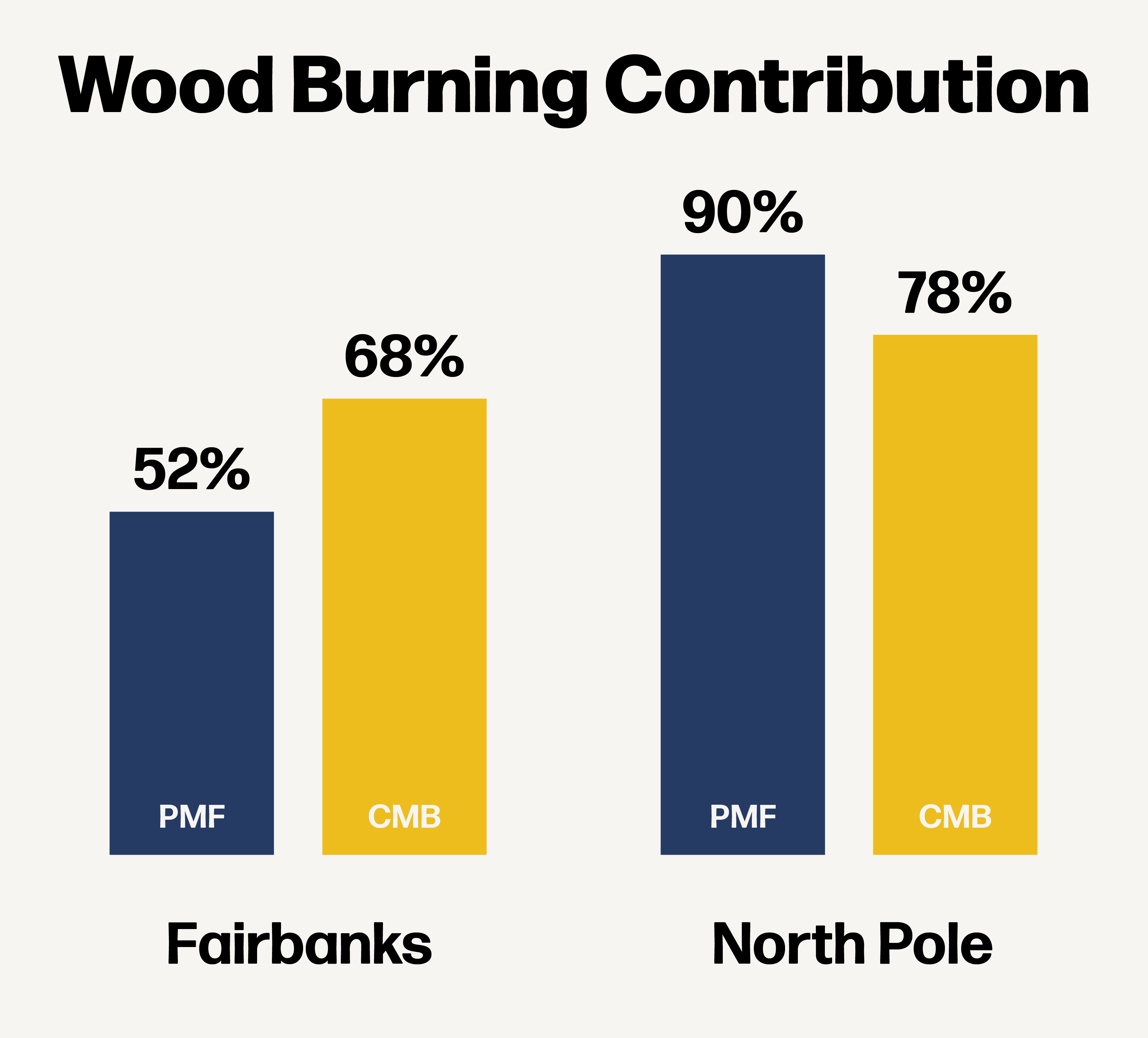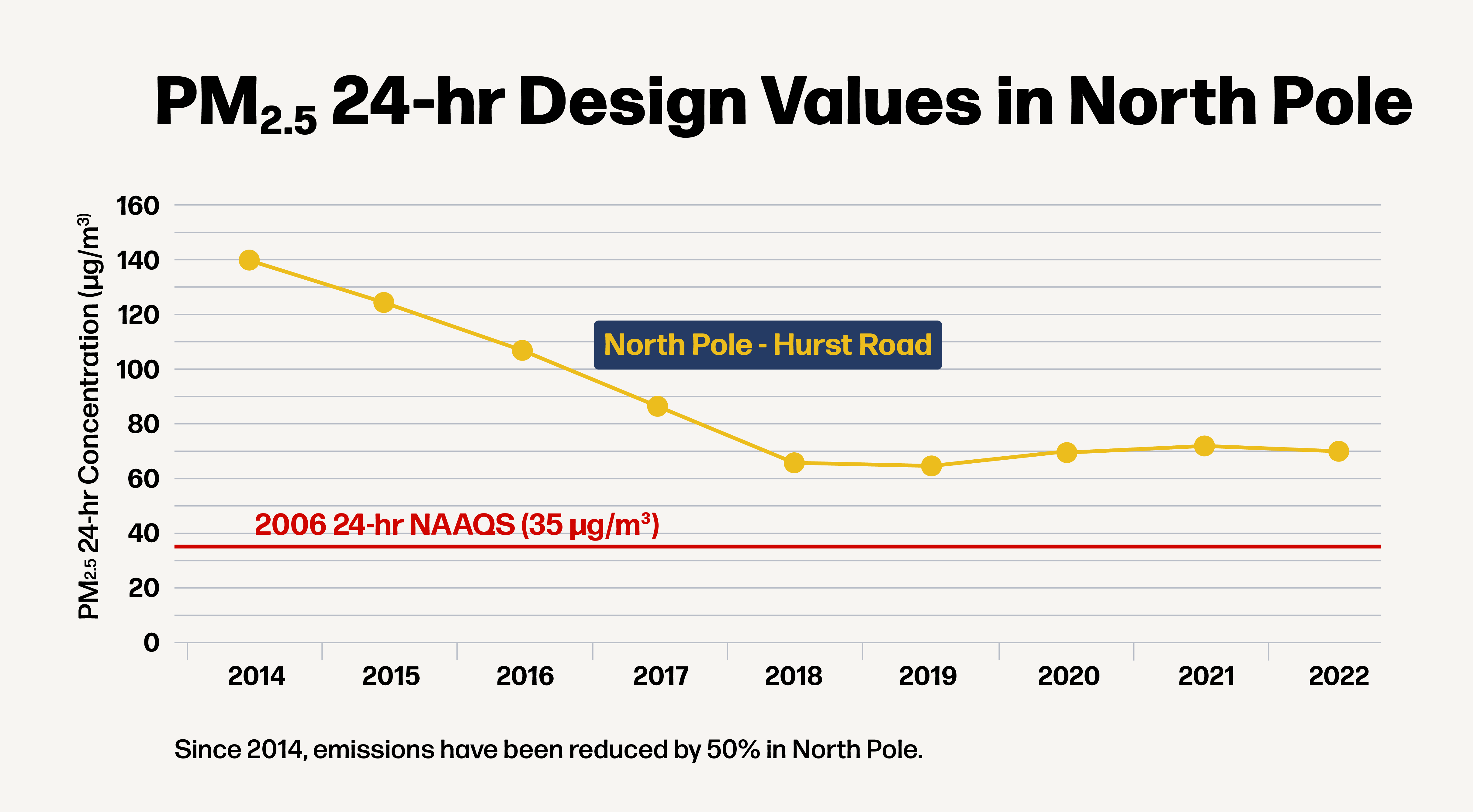DEC continues to press EPA for reasonable approach to PM pollution
- Emma Pokon, Acting Commissioner
What is the State doing about air quality in the Fairbanks North Star Borough (FNSB)?
For 14 years, the local communities, the Borough, and DEC have been making progress on particulate matter pollution in the FNSB Nonattainment Area. DEC and the Borough have worked diligently within federal restrictions to develop a plan that curbs emissions and provides a sustainable and affordable framework to help maintain air quality. This is no simple task.
DEC put together its own list of approved woodstoves despite EPA’s failure to properly certify them. Now you can have confidence that your new stove is actually more efficient. We’ve submitted to EPA and implemented three plans containing numerous measures to reduce emissions in the region. And we’ve fought the federal government’s proposed mandates where they just don’t make sense.
EPA wanted to impose costly control measures on power plants. This would only increase utility costs for residents with little to no benefit to air quality. We’ve fought to get EPA to accept that power plants in the area are emitting above the inversion layer, and therefore not contributing to the winter PM problem. New science and modelling results from this year strongly support the argument that we’ve been making for years.
EPA pushed for mandating expensive ultra-low sulfur diesel (ULSD) for home heating. This would place an unreasonably high financial burden on residents. DEC put a lot of effort into producing a convincing analysis so that EPA would acknowledge that ULSD was economically infeasible. It worked. That’s a win for residents, saving them from a huge cost increase for home heating oil.
Are woodstoves and smoke really the problem?

Figure 1: Fairbanks and North Pole wood burning contribution findings summary from winter filter based monitoring speciation results. Two studies using two different methods (positive matrix factorization and chemical mass balance) were performed during winter months from 2010 to 2015. Wood burning dominated as a source of PM2.5 pollution.
Wood smoke produces a type of air pollution called particulate matter (PM) which can cause lung damage and is especially harmful to elders, children, and our neighbors with cardiovascular disease, asthma, or other respiratory problems.
Organic carbon measured at DEC’s Hurst Road monitor in North Pole tells us that, unfortunately, wood smoke is a major contributor to air pollution in the FNSB Nonattainment Area, a federally designated area that does not meet health-based National Ambient Air Quality Standards (NAAQS) under the Clean Air Act. This is of particular concern in winter when PM pollution gets stuck in the inversion layer and there are increased fuel needs.
We’ve known this since at least 2009 when the Environmental Protection Agency (EPA) designated the nonattainment area. DEC and the Borough have been working diligently within federal restrictions to develop a plan that curbs emissions and provides a sustainable and affordable framework for us to help residents maintain lower emissions.
But updating or replacing woodstoves is expensive too…right?
You’re worried about keeping your family warm without breaking the bank. You’re accustomed to an affordable, convenient heat source. And then the government asks you to ditch a way of life that has sustained warm homes in Alaska since you can remember. That’s frustrating. I get it.
We recognize that asking you to update your woodstove or seek an alternative fuel source is a hassle. But the bottom line is that if we don’t get into attainment, the federal government will likely enforce controls with much more expensive consequences. And we have resources to help make the transition easier. DEC offers waivers if you need to burn during an air quality alert, and the Borough has over $17 million for various wood stove change outs and upgrades.
How do we move forward?
The FNSB area has come a long way. Not only has the North Pole area reduced its emissions by half – the Fairbanks area has been in attainment, for the most part, since 2015! But there’s still work to be done.
Although the solutions to this problem are not necessarily easy or convenient, I can confidently say that we have fought for a plan that considers the needs of Alaskans. While today’s announcement is a little disappointing, DEC remains committed to working for progress in a manner that works best for the community.


 Indicates an external site.
Indicates an external site.